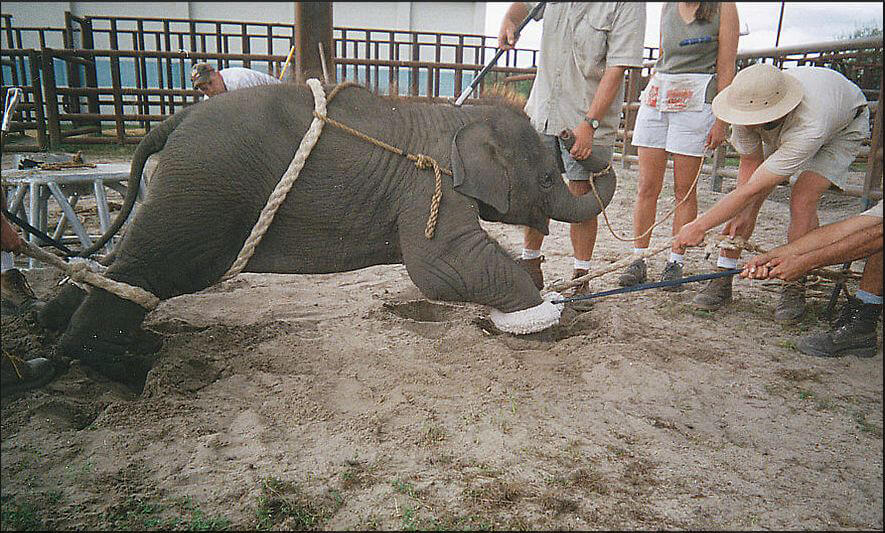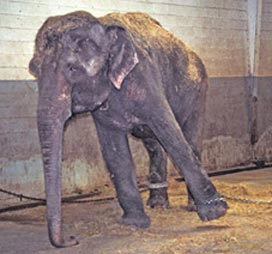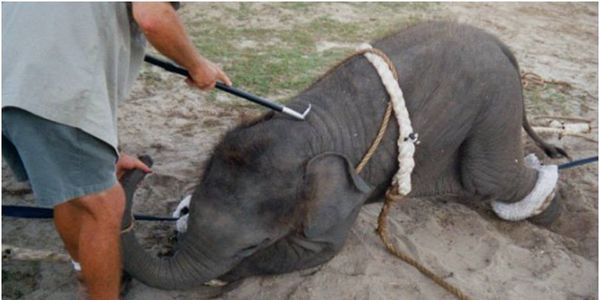
The public is often naïve to the treatment of animals in circuses and other entertainment industries. Many people believe that these animals are treated fairly and are well trained in order to successfully perform a variety of tricks and gigs for circus shows, however, this is mostly false. Although rewarding an animal with food, also known as positive reinforcement, is a method used to train animals, it is not merely enough to control an animal in the ring (Niedrich).
Many circus professionals resort to negative reinforcement, what we know to be physical abuse, in order to train and tame the animals. Animals are often abused by circus trainers with whips, tight collars, white muzzles, electric prods, bull hooks, and other painful tools used in the circus trade (Circuses: Three Rings of Abuse).

Elephants and other animals are tied up and get beaten or whipped when they do not obery the trainor. With this type of negative reinforcement, animals are afraid of the phsyical abuse they encounter, therefore they are conditioned to perform the trick at the sight of a whip.


Circuses often get away with such horrifying acts of cruelty as it is hard for the government to consecutively monitor training sessions and shows since the circus handlers are very cautious when in public. Due to their transient nature, authorities have a difficult time to effectively inspect circuses and enforce animal welfare laws as circuses stay in an area for only a few days before leaving to their next location (Advancing Public Knowledge of Animal Practices and Preventing the Abuse and Killing of Animals).